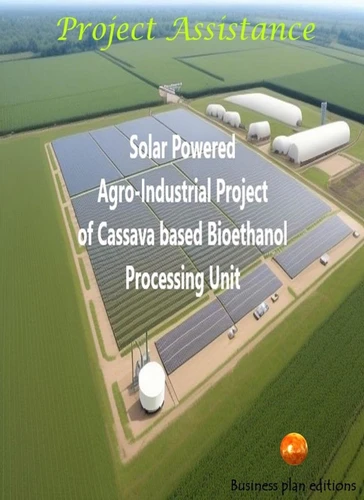Solar Powered Agro Industrial Project of Cassava Based Bioethanol Processing Unit
Par :Formats :
Disponible dans votre compte client Decitre ou Furet du Nord dès validation de votre commande. Le format ePub est :
- Compatible avec une lecture sur My Vivlio (smartphone, tablette, ordinateur)
- Compatible avec une lecture sur liseuses Vivlio
- Pour les liseuses autres que Vivlio, vous devez utiliser le logiciel Adobe Digital Edition. Non compatible avec la lecture sur les liseuses Kindle, Remarkable et Sony
 , qui est-ce ?
, qui est-ce ?Notre partenaire de plateforme de lecture numérique où vous retrouverez l'ensemble de vos ebooks gratuitement
Pour en savoir plus sur nos ebooks, consultez notre aide en ligne ici
- FormatePub
- ISBN8224136438
- EAN9798224136438
- Date de parution26/02/2024
- Protection num.pas de protection
- Infos supplémentairesepub
- ÉditeurVirtued Press
Résumé
! Compared to sugarcane and corn, cassava-based bioethanol currently commands a smaller market share, estimated at around $5-7 billion. However, it's experiencing faster growth, projected at 7-12% annually. This rapid expansion is fueled by several key factors:1. Lower Feedstock Costs: In many regions, especially Africa and Southeast Asia, cassava cultivation requires less land, water, and fertilizer compared to corn and sugarcane, making it a more cost-effective feedstock.2.
Higher Ethanol Yield per Hectare: Studies suggest cassava can produce more ethanol per hectare than corn or sugarcane, increasing potential profitability for farmers and bioethanol producers.3. Government Support: Biofuel mandates and incentives in cassava-producing countries like Thailand, Brazil, and Nigeria are driving expansion through increased demand and investment.4. Sustainability Potential: Compared to traditional feedstocks, cassava can offer lower greenhouse gas emissions and reduced competition for arable land, increasing its attractiveness in sustainability-conscious markets.
Higher Ethanol Yield per Hectare: Studies suggest cassava can produce more ethanol per hectare than corn or sugarcane, increasing potential profitability for farmers and bioethanol producers.3. Government Support: Biofuel mandates and incentives in cassava-producing countries like Thailand, Brazil, and Nigeria are driving expansion through increased demand and investment.4. Sustainability Potential: Compared to traditional feedstocks, cassava can offer lower greenhouse gas emissions and reduced competition for arable land, increasing its attractiveness in sustainability-conscious markets.
! Compared to sugarcane and corn, cassava-based bioethanol currently commands a smaller market share, estimated at around $5-7 billion. However, it's experiencing faster growth, projected at 7-12% annually. This rapid expansion is fueled by several key factors:1. Lower Feedstock Costs: In many regions, especially Africa and Southeast Asia, cassava cultivation requires less land, water, and fertilizer compared to corn and sugarcane, making it a more cost-effective feedstock.2.
Higher Ethanol Yield per Hectare: Studies suggest cassava can produce more ethanol per hectare than corn or sugarcane, increasing potential profitability for farmers and bioethanol producers.3. Government Support: Biofuel mandates and incentives in cassava-producing countries like Thailand, Brazil, and Nigeria are driving expansion through increased demand and investment.4. Sustainability Potential: Compared to traditional feedstocks, cassava can offer lower greenhouse gas emissions and reduced competition for arable land, increasing its attractiveness in sustainability-conscious markets.
Higher Ethanol Yield per Hectare: Studies suggest cassava can produce more ethanol per hectare than corn or sugarcane, increasing potential profitability for farmers and bioethanol producers.3. Government Support: Biofuel mandates and incentives in cassava-producing countries like Thailand, Brazil, and Nigeria are driving expansion through increased demand and investment.4. Sustainability Potential: Compared to traditional feedstocks, cassava can offer lower greenhouse gas emissions and reduced competition for arable land, increasing its attractiveness in sustainability-conscious markets.










